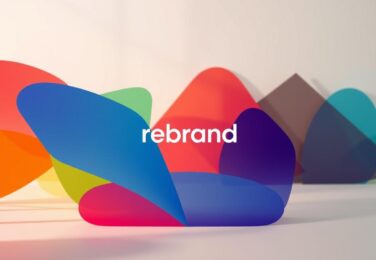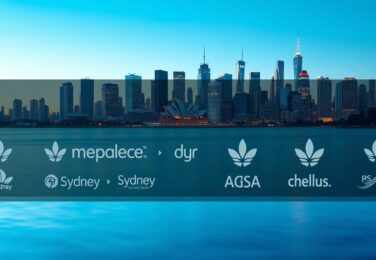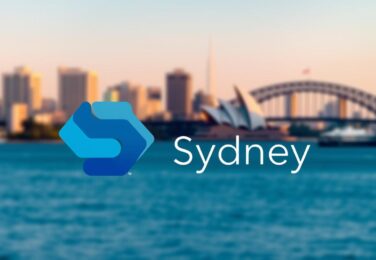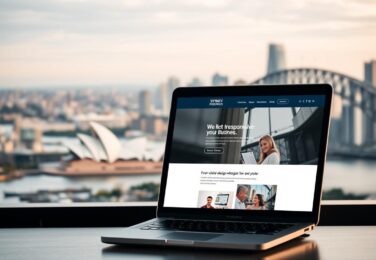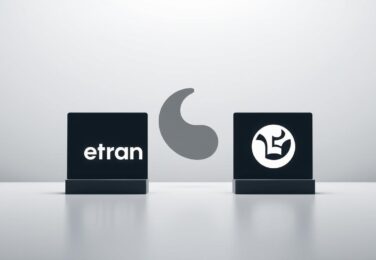How to Build a Strong Brand Identity That Resonates with your Customers

Table of Content
We started as a small Sydney studio, helping local businesses like cafés and professional services. A family-run bakery in Newtown asked us to refresh their logo. They wanted more foot traffic, despite great reviews.
We dug deep into their story, simplifying their look and message. We focused on their commitment to artisanal bread. This approach led to more recognition, repeat customers, and higher sales.
This experience taught us a lot. A strong brand identity can cut marketing costs and increase customer value. It also helps with premium pricing when done right.
In this article, we share our hands-on experience in brand identity and digital solutions. We see branding as both strategy and craft. Visual identity and brand voice are key, not just one or the other.
We’ll guide you on how to build a strong brand identity. We’ll also tell you when to seek help from a branding agency in Sydney.
Key Takeaways
- Strong brand identity lowers marketing costs and boosts customer lifetime value.
- Visual design and voice must work together to maintain brand consistency.
- Practical guidance here combines strategic thinking with hands-on design experience.
- We recommend engaging a specialist branding agency sydney when scaling or rebranding.
- If you need support with customisation or designer collaboration, contact hello@defyn.com.au.
Understanding the importance of brand identity for Australian businesses
We start by defining terms so teams act with purpose. Brand identity is the set of visual, verbal and behavioural choices a company makes. Brand image is how customers see those choices. Brand positioning is the unique space a brand has in the market.
Why does a deliberate identity matter in competitive markets? It helps a brand stand out, making it easier for customers to choose. When a café in Surry Hills, a law firm in Parramatta or a SaaS startup in Pyrmont uses distinct naming, tone and visuals, they cut through the noise. Using a logo, typography and messaging consistently boosts recognition and recall.
How does strong branding drive trust and loyalty? Being consistent signals reliability. Being clear about purpose fosters emotional connection. These effects lead to higher conversion rates, greater retention and more referrals. Key metrics to watch include repeat-purchase rate, Net Promoter Score and brand lift from short surveys.
What local nuances shape perception across Australia? Aussie customers value authenticity and direct communication. Social proof like local reviews and partnerships is more important here than global claims. Sydney audiences are diverse and design-savvy yet uphold cultural values, which means building a brand identity in Sydney requires cultural awareness without sacrificing clarity.
Regulatory and accessibility standards also influence credibility. Australian Consumer Law and accessibility expectations mean sustainability claims and digital design must be verifiable and inclusive. Small errors in compliance can be costly and look like careless branding mistakes.
Practical takeaway: prioritise clarity, brand consistency and culturally aligned messaging. Invest in thoughtful brand identity graphic design that scales across channels. This reduces friction, builds trust and positions your business to grow in Sydney and beyond.
| Focus | What to check | Local example |
|---|---|---|
| Identity vs Image | Document visual, verbal and behavioural rules; audit customer perception | Sydney café: consistent logo, menu tone and staff interactions |
| Trust metrics | Track repeat purchases, NPS and referral volume | Professional services: retention increase after brand refresh |
| Market nuances | Match tone to regional expectations; include local social proof | SaaS: local case studies with Australian partners |
| Common pitfalls | Poor accessibility, vague sustainability claims, inconsistent visuals | Branding mistakes: mixed logos across channels harming recall |
| Design action | Invest in scalable brand identity graphic design and a usage guide | Agency-led toolkit for Sydney-based retail chains |
Defining your brand purpose, mission and values
We start by figuring out why the brand exists and what it stands for. This is the foundation of building a strong brand identity. A clear purpose helps make consistent choices. It also ensures the brand voice fits both customers and the company culture.
Crafting a clear brand purpose that guides every decision
What’s the difference between purpose and mission? Purpose is why we exist. Mission is what we do. Values show how we behave. We do stakeholder interviews, check competitors, and understand customer needs. The result is a short, one-sentence purpose statement.
- Ask: “What change do we exist to deliver?”
- Ask: “Who benefits most from our work?”
- Deliver: one clear sentence that fits on a slide and in a briefing doc
Aligning mission and values with customer expectations
We match customer priorities like service speed and sustainability with our values. Values should be specific and actionable. For example, say “respond within 24 hours” instead of “customer-focused”. Use values in hiring, partner selection, and customer policies to keep promises real.
- Research customer priorities and rank them.
- Translate priorities into specific behaviours and standards.
- Reject vague terms that can’t be proven.
Translating internal culture into external brand promise
Make values real through onboarding, internal comms, KPIs, and rewards. If a firm promises clarity, it should have simple pricing and contracts. Check if values are followed by tracking employee engagement, churn, and customer feedback.
- Embed values in performance reviews and recognition.
- Design KPIs that reflect customer-facing promises.
- Use feedback loops to refine the promise over time.
Key takeaway: A purpose-led approach is essential for a strong brand identity. This clarity makes developing a consistent brand voice easier and ensures that strategies implemented to build brand identity in Sydney are both solid and customer driven.
Knowing your audience: research and customer insights
We start by listening. Thorough audience research is the foundation of creating a brand identity businesses rely on. It cuts down on guesswork and allows teams to focus on delivering what customers truly need.
What’s the best way to do this in Sydney?
We use a mix of methods to get a clear picture.
- Qualitative: we do in-person interviews, focus groups, and short ethnography sessions in places like Newtown and Surry Hills.
- Quantitative: we use online surveys, CRM segmentation, and Google Analytics to look at traffic and sales.
- B2B sampling: we reach out on LinkedIn and use Sydney panels to talk to finance, tech, and professional services leaders.
- Competitor benchmarking: we compare messaging, pricing, and channels to find where we can stand out.
How do we make personas from our research?
Creating personas starts with fields that guide decisions, not profiles that stereotype.
- Core demographics and firmographics for basic targeting.
- Tasks, pain points, and what triggers purchases to focus on product and messaging.
- Preferred channels and content formats for planning and media buying.
- Journey mapping to turn persona insights into email sequences, landing pages, and ad creative.
How do we use feedback and analytics to improve our positioning?
We watch how people behave to test our ideas and update our work fast.
- Metrics: we look at bounce rate, time on page, funnel drop-offs, and where people come from.
- Direct feedback: we use post-purchase surveys, user testing, and customer support logs.
- Experimentation: we run A/B tests on messaging and creative, using results to improve our visual identity and messaging.
What’s the key takeaway?
Keeping up with your audience is key for a strong brand in Sydney’s fast market. We see research as a loop: observe, test, refine, repeat.
Developing a memorable visual identity design
We focus on practical steps to turn strategy into visual assets. A clear visual identity design helps customers recognise your business quickly. It builds trust across channels. Below we outline core elements, scaling systems and real-world examples to guide brand identity graphic design decisions.

Key elements and their roles
Logo: the primary mark that anchors recognition. Use scalable vector formats so the logo stays sharp on signage, packaging and web.
Colour: an emotional shorthand that speeds recall. Check WCAG contrast for accessibility. Pick primary, secondary and neutral palettes that work in print and digital.
Typography: gives voice its look. Choose readable typefaces. Consider variable fonts for responsive layouts to keep personality without sacrificing legibility.
Technical checklist
- Create SVG and EPS files for logos to preserve quality at any size.
- Test colour combinations against WCAG AA standards for text and UI elements.
- Define font fallbacks and sizes for headings, body and captions to ensure consistency.
Building systems that scale
Design systems prevent fragmentation when teams or partners apply brand assets. We recommend a component library for buttons, icons and form elements, plus spacing and grid rules.
- Produce print-ready PDFs, web SVGs and social templates for common layouts.
- Write clear brand guidelines with do’s and don’ts to avoid common branding mistakes.
- Include examples for packaging, signage, email and mobile so the system adapts across touchpoints.
Rollout checklist for practical use
- Finalise logo files and file naming conventions.
- Export colour swatches and provide HEX, RGB and Pantone values.
- Package type files, web font licences and usage rules.
- Create templated assets for social, proposals and invoices.
- Share a concise brand summary for staff and external partners.
Examples small businesses can follow
A boutique café in Newtown used a limited colour palette for cups, signage and interiors. This created a consistent feel that customers recognise at a glance.
A Parramatta legal practice modernised typography and spacing. They appeared more approachable while keeping a professional tone that clients trust.
Lessons learned
- Avoid trendy gimmicks that date quickly. Timeless choices beat seasonal fads.
- Prioritise recognisability over complexity when designing marks and patterns.
- Base visual decisions on audience research and competitor review to reduce costly rebrands.
Investing in flexible brand identity graphic design pays off as businesses scale. When the system is clear, teams produce assets faster. Partners apply the identity correctly and customers form stronger associations with the brand identity sydney businesses rely on.
Creating a consistent brand voice and messaging
We help your brand speak in a way that feels familiar and trustworthy. Clear voice and messaging make it easier for customers to connect with you. This approach also helps your brand stand out in Sydney and beyond. By avoiding common mistakes early on, you save time and money as you grow.
What steps should we follow to create a voice that reflects our values?
- Audit existing copy across web, email, social and support to spot gaps in tone and fact. This flags where brand consistency breaks down.
- Define three to five voice attributes — for example confident, supportive, pragmatic — and give behavioural examples for each.
- Create starter messaging: a succinct value proposition, an elevator pitch, three key benefits and proof points that teams can reuse.
How do we write for different channels without diluting the brand?
- Set channel rules: web copy should be concise and SEO-aware; email needs direct calls-to-action; social requires conversational lines; legal copy must be unambiguous.
- Show transformations. Turn a headline into an email subject and a social caption so teams learn how to adapt tone quickly.
- Prioritise plain English, short sentences and clear structure for accessibility and comprehension.
How do we keep messaging consistent across teams?
- Centralise assets in a living brand guide and a copy bank accessible to marketing, sales and support.
- Run regular training and supply quick-reference one-pagers for common scenarios like onboarding and sales outreach.
- Appoint a brand custodian and define approval workflows for major campaigns to reduce branding mistakes and mixed messages.
What is the practical takeaway for businesses in Sydney?
- A consistent voice reduces customer friction, builds trust, and strengthens the brand identity in Sydney that audiences recognise across different touchpoints.
- Creating a brand voice is a repeatable process that protects reputation and frees teams to create faster, more effective content.
Practical steps to build a strong brand identity
We help teams create a strong brand identity. This connects with customers and shows real results. We start with a detailed audit, then make a strategy, design, and roll out with key checks.

What should a checklist look like?
- Audit: gather existing assets, run stakeholder interviews and map competitors and audience gaps.
- Strategy: define purpose, positioning and a messaging hierarchy that informs a practical creative brief.
- Design: develop visual identity design components, templates and a rollout plan prioritised by impact.
- Implementation: update website, social channels, signage and collateral, and run staff training for consistent execution.
- Post-launch: monitor results, iterate designs and document lessons for future releases.
How do we brief designers or a branding agency?
- Set clear objectives and target outcomes.
- Share audience insights and examples of desired tone.
- State technical constraints like formats, print specs and CMS requirements.
Which engagement models are common in Sydney?
- Fixed-price packages for defined scopes.
- Retainers for ongoing optimisation and governance.
- Design sprints for rapid concept validation.
Why pick a local partner?
- Agencies in Sydney know regional preferences and supplier networks.
- Local production partners speed up prototyping and rollout.
- Request case studies and before/after metrics to validate outcomes.
Which KPIs show real progress?
- Brand awareness lift and organic search traffic.
- Conversion rate and average order value.
- Net Promoter Score and customer retention.
What tools support measurement?
- Google Analytics for traffic and conversion funnels.
- Mixpanel and Hotjar for user behaviour analysis.
- Social analytics and dedicated brand tracking surveys for sentiment and reach.
How should optimisation work?
- Set quarterly reviews with stakeholders.
- Run controlled tests on messaging and creative.
- Maintain a backlog of brand improvements and prioritise by impact and cost.
Practical takeaway: treat brand identity as an evolving asset. Plan audits, partner with a reputable branding agency sydney when you need local knowledge, and use visual identity design and data to refine what resonates.
| Phase | Key Activities | Success Measures |
|---|---|---|
| Audit | Asset inventory, stakeholder interviews, competitor and audience analysis | Comprehensive gap report, priority list for fixes |
| Strategy | Define purpose, positioning, messaging hierarchy, creative brief | Approved brand brief, clear KPIs and roadmap |
| Design | Create visual identity design, templates, component library | Style guide, reusable assets, production-ready files |
| Implementation | Website updates, social, signage, collateral, staff training | Consistent rollout, staff adoption, initial KPI movement |
| Post-launch | Monitoring, testing, iterative updates and documentation | Quarterly performance gains, documented lessons and improvements |
Common branding mistakes and how to avoid them
Startups and big companies often make the same branding mistakes. Small design or message errors can become big problems if not fixed. This section will highlight common mistakes and how to avoid them to keep your brand trusted and recognised.
Pitfalls in visual identity and how they harm recognition
Using logos and colours inconsistently can make your brand harder to remember. Low-quality images on websites and in print can make your brand look unprofessional. This can hurt your credibility.
Using complex or trendy logos can make your brand look outdated fast. It’s better to have a simple, flexible logo that looks good in black and white and at small sizes.
Messaging errors that alienate customers
Using too much jargon or making exaggerated claims can scare off customers. Using clear language helps build trust and keeps your messages easy to understand.
Ignoring accessibility and making inconsistent promises can confuse people and lead to legal problems. Make sure your tone fits your audience and test your messages with real people.
How lack of brand consistency undermines growth
A fragmented brand identity can hurt your ads and make your brand harder to remember. Teams spend too much time fixing these mistakes, which increases costs and slows down decisions.
Having a brand owner, following guidelines, and doing regular checks can help. Proper asset management and governance can reduce mistakes and protect your brand’s value over time.
Practical takeaway: avoid common mistakes by setting clear rules, having one place for all assets, and checking regularly. Good governance helps keep your brand’s visual identity strong and consistent across all channels.
| Common Error | Impact | Quick Fix |
|---|---|---|
| Inconsistent logo and colours | Lower brand recall and poor ad performance | Centralise assets and publish colour codes for print and web |
| Low-quality imagery | Unprofessional appearance across touchpoints | Create a high-res image library and enforce minimum specs |
| Jargon-filled messaging | Customer confusion and reduced conversions | Use plain English and test copy with target personas |
| No brand owner | Slow approvals, duplicated work, drifting identity | Assign a brand custodian and schedule regular audits |
| Over-reliance on trends | Short-lived relevance and redesign costs | Prioritise timeless principles in brand identity graphic design |
| Poor accessibility | Excludes customers, potentially risky for compliance | Follow WCAG basics for colour contrast and readable copy |
| Inconsistent offers and promises | Damaged trust and higher churn | Align marketing, sales and product messaging via a content playbook |
How to choose the right branding partner or agency
We guide business leaders in finding a partner that combines creativity with results. The right team is key for your brand’s identity in Sydney. Use these tips to compare agencies and make a smart choice.
What to look for in a partner
Look for a branding agency in Sydney that fits your business size and industry. Make sure they show results from strategy, not just looks.
- Portfolio relevance: campaigns for similar business sizes and target markets.
- Process transparency: clear discovery, research, iteration and governance steps.
- Cultural fit: local market understanding of Sydney and alignment with your company values.
- Commercial focus: examples of improved conversions, brand lift or measurable KPIs.
Questions to ask prospective designers or agencies
Ask direct questions to test their methods and results.
- What does your discovery process include and how do you surface customer insights?
- How do you validate design decisions with research and testing?
- Can you show outcomes tied to metrics, such as conversion rate or brand awareness?
- Who owns the final assets and what post-project support do you provide?
- What are typical timelines and how many revisions are included?
Working productively with external partners
Make a clear brief that outlines scope, audience insights, and success metrics. This brief guides every design choice.
- Structure feedback: label items as ‘critical’ or ‘nice-to-have’ and annotate designs visually.
- Set review windows to keep the project on schedule and avoid scope creep.
- Plan handover: request source files, a style guide and clear usage rights.
Practical takeaway
Choose a partner that balances creativity with results. A good branding agency in Sydney will enhance your brand’s identity, apply effective graphic design, and help you create a strong brand voice.
Conclusion
We think a strong brand identity in Sydney is key. It mixes purpose, knowing your audience, clear design, and consistent messages. To get there, start with a clear purpose and really understand your customers. Then, use that knowledge to create designs and messages that work everywhere.
Our top tips include doing a brand audit, creating designs that grow with your business, and keeping messages simple. Stay away from common mistakes by testing ideas, checking results, and keeping your brand consistent. This way, your brand stays true and trusted in a competitive world.
Here’s what you can do: first, do a quick brand check (list your assets, check your messages, and ask customers for feedback). Then, pick one big change, like a new website hero or logo, and see how it goes. If you need help, email hello@defyn.com.au for support.
We encourage business owners and professionals to see brand identity as a valuable investment. We’re here to help with advice and hands-on support. Together, we can avoid mistakes and achieve lasting success in brand identity in Sydney and more.


